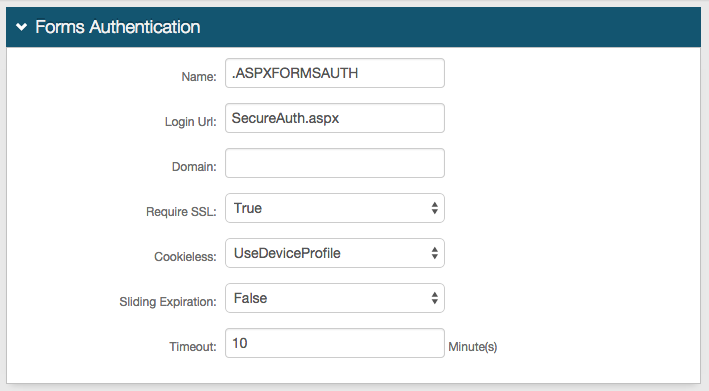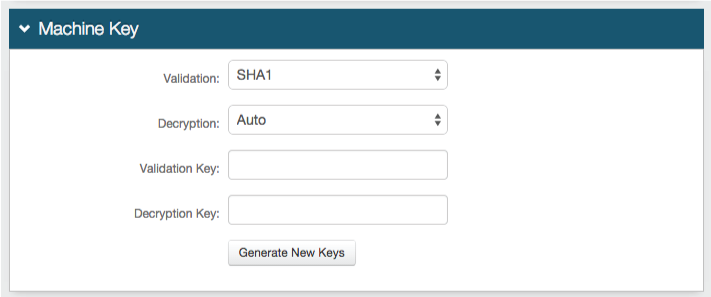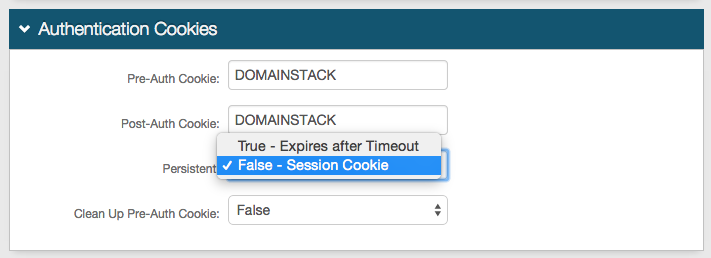Mozy (IdP-initiated) Integration Guide
Introduction
Use this guide to enable Multi-Factor Authentication and Single Sign-on (SSO) access via SAML to Mozy.
Prerequisites
1. Have a Mozy account
2. Ensure that Mozy is using the Directory Service authentication mechanism and that the function is provisioned
Contact the Mozy Account Executive / Manager for assistance
3. Create a New Realm for the Mozy integration
4. Configure the following tabs in the Web Admin before configuring the Post Authentication tab:
Overview – the description of the realm and SMTP connections must be defined
Data – an enterprise directory must be integrated with SecureAuth IdP
Workflow – the way in which users will access this application must be defined
Multi-Factor Methods – the Multi-Factor Authentication methods that will be used to access this page (if any) must be defined
SecureAuth IdP Configuration Steps
Data
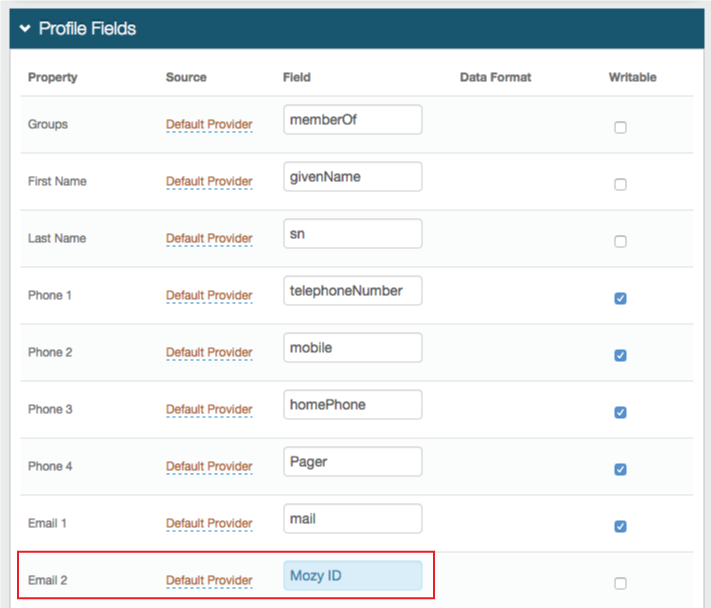 |
1. In the Profile Fields section, map the directory field that contains the user's Mozy ID to the SecureAuth IdP Property
For example, add the Mozy ID Field to the Email 2 Property if it is not already contained somewhere else
Warning
Click Save once the configurations have been completed and before leaving the Data page to avoid losing changes
Post Authentication
 |
2. Select SAML 2.0 (IdP Initiated) Assertion Page from the Authenticated User Redirect dropdown in the Post Authentication tab in the Web Admin
3. An unalterable URL will be auto-populated in the Redirect To field, which will append to the domain name and realm number in the address bar (Authorized/SAML20IdPInit.aspx)
4. A customized post authentication page can be uploaded, but it is not required
User ID Mapping
 |
5. Select the SecureAuth IdP Property that corresponds to the directory field that contains the Mozy ID (Email 2)
6. Select urn:oasis:names:tc:SAML:1.1:nameid-format:unspecified from the Name ID Format dropdown (default)
Select a different option if Mozy requires it, which the SP will provide
7. Select False from the Encode to Base64 dropdown
SAML Assertion / WS Federation
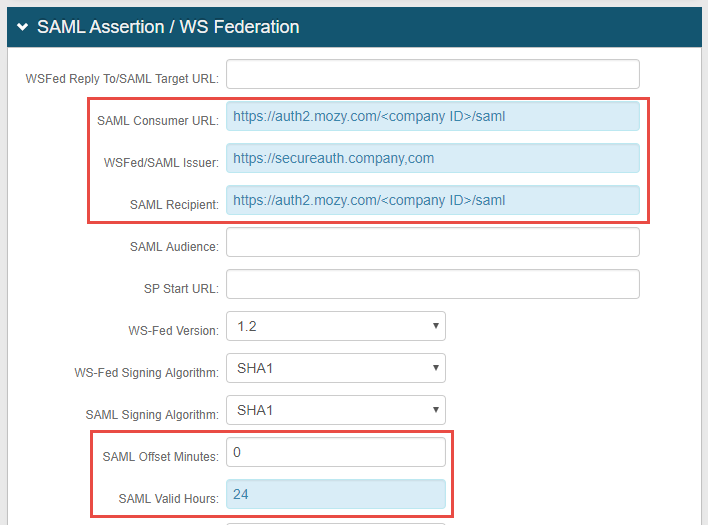 |
8. Set the Consumer URL to https://auth2.mozy.com/<company ID>/saml
Retrieve the Company ID and full URL from Mozy
9. Set the WSFed/SAML issuer to the Fully Qualified Domain Name (FQDN) of the SecureAuth IdP appliance, e.g. https://idp.company.com
The WSFed/SAML Issuer must match exactly on the SecureAuth IdP side and the Mozy side (see Mozy Configuration Steps)
10. Set the SAML Recipient to https://auth2.mozy.com/<company ID>/saml
Retrieve the Company ID and full URL from Mozy
11. Set the SAML Offset Minutes to make up for time differences between devices
12. Set the SAML Valid Hours to limit for how long the SAML assertion is valid
13. Select True from the Sign SAML Assertion dropdown
14. Select False from the Sign SAML Message dropdown
Note
No configuration is required for the WSFed Reply To/SAML Target URL, SAML Audience, or SP Start URL fields
 |
15. Leave the Signing Cert Serial Number as the default value, unless there is a third-party certificate being used for the SAML assertion
If using a third-party certificate, click Select Certificate and choose the appropriate certificate
16. Provide the Domain in order to Download the Metadata File to send to Mozy (if required)
Warning
Click Save once the configurations have been completed and before leaving the Post Authentication page to avoid losing changes
Forms Auth / SSO Token
Optionally, in the Forms Auth / SSO Token section, click the View and Configure FormsAuth keys/SSO token link to configure the token/cookie settings and configure this realm for SSO.
 |
Mozy Configuration Steps
Attribute Mapping
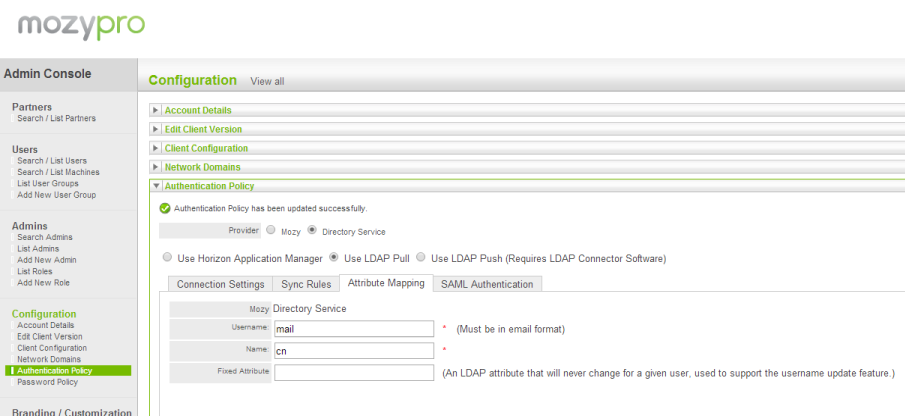 |
1. Log into the Mozy account and enter the Authentication Policy settings
2. Select the Attribute Mapping tab
3. Set the Username field to the same directory field that is mapped to the SecureAuth IdP Property being used in the User ID Mapping section (Email 2)
4. Set the Name field to the directory field that contains the user's name
SAML Authentication
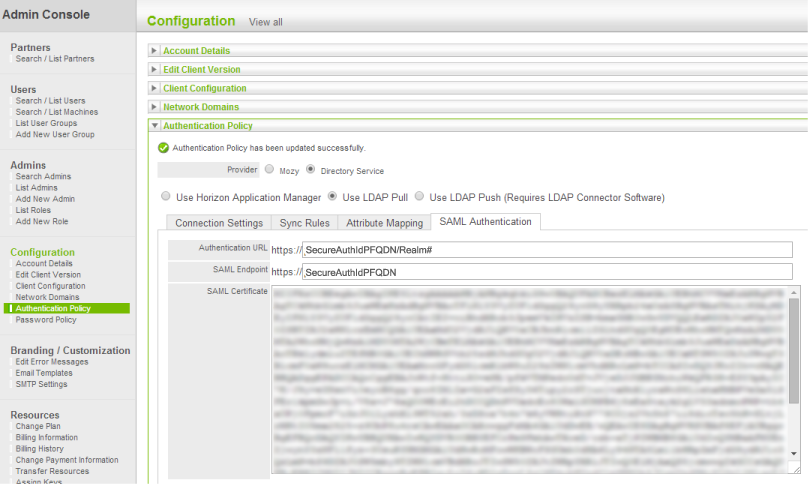 |
5. Select the SAML Authentication tab
6. Set the Authentication URL to the SecureAuth IdP FQDN, followed by the realm number of the Mozy integration realm configured in the SecureAuth IdP Web Admin, e.g. idp.company.com/secureauth2
The SecureAuth IdP FQDN value must match the WSFed/SAML Issuer value in the Web Admin (step 9)
7. Set the SAML Endpoint to the SecureAuth IdP FQDN, e.g. idp.company.com
This value must match the WSFed/SAML Issuer value in the Web Admin (step 9)
8. Copy and paste the content from either the Metadata File (step 16) or the Assertion Signing Certificate (step 15) in the SAML Certificate field
If using Metadata File: copy and paste the content between the <X509 Certificate> tags
If using Assertion Signing Certificate: copy and paste the content between ---BEGIN CERTIFICATE--- and ---END CERTIFICATE--- markers
Note
Metadata XML or Certificate markers should not be included in the SAML Certificate field
Troubleshooting / Common Issues
1. If the URL displays Unknown User, the cause is most likely a mismatch between the Mozy Username attribute and the attribute being sent in User ID Mapping. Ensure that they are both using the same directory field.
In some cases, Unknown User may be the result of the email not being populated in Active Directory or LDAP. Ensure that the attribute being used for User ID Mapping is populated in the appropriate directory service.
Also ensure that the user is properly provisioned within the MozyEnterprise console.
2. If the URL displays Invalid SAML, the most common issues are clocking and token-signing related. Ensure that the clock on the machine attempting authentication is accurate and in the proper time zone. Also ensure that the token-signing certificate (labeled as SAML Certificate) has been properly pasted into the MozyEnterprise console, complete with trailing =, and without any XML or certificate delimiters (such as <X509 Certificate> or ---BEGIN CERTIFICATE---)
